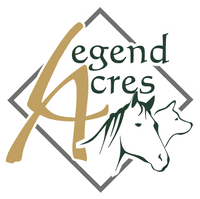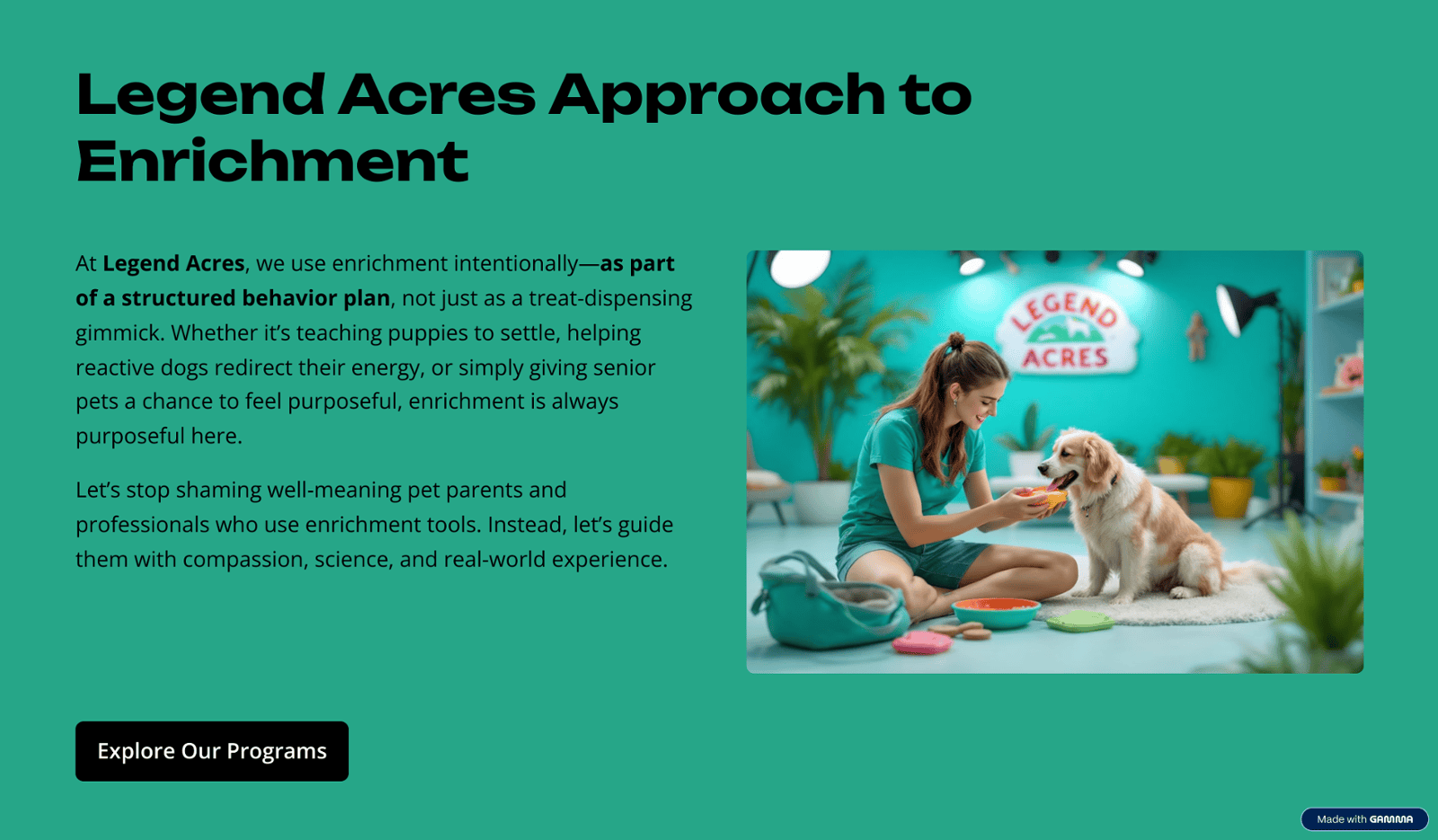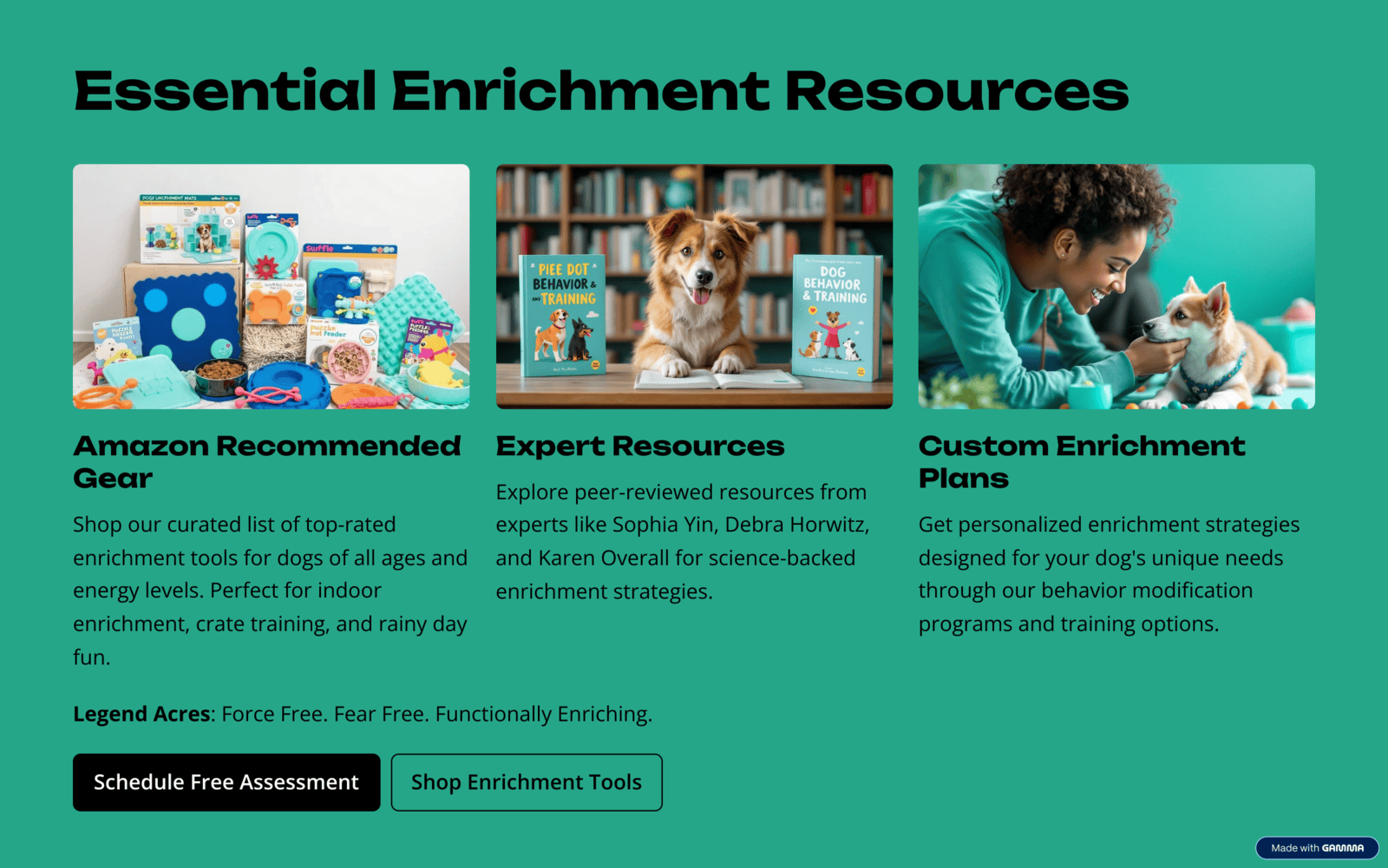What counts as real enrichment? At Legend Acres, we debunk common myths, explore food-based engagement, and give you expert-backed tips to support your dog’s mental and emotional well-being.
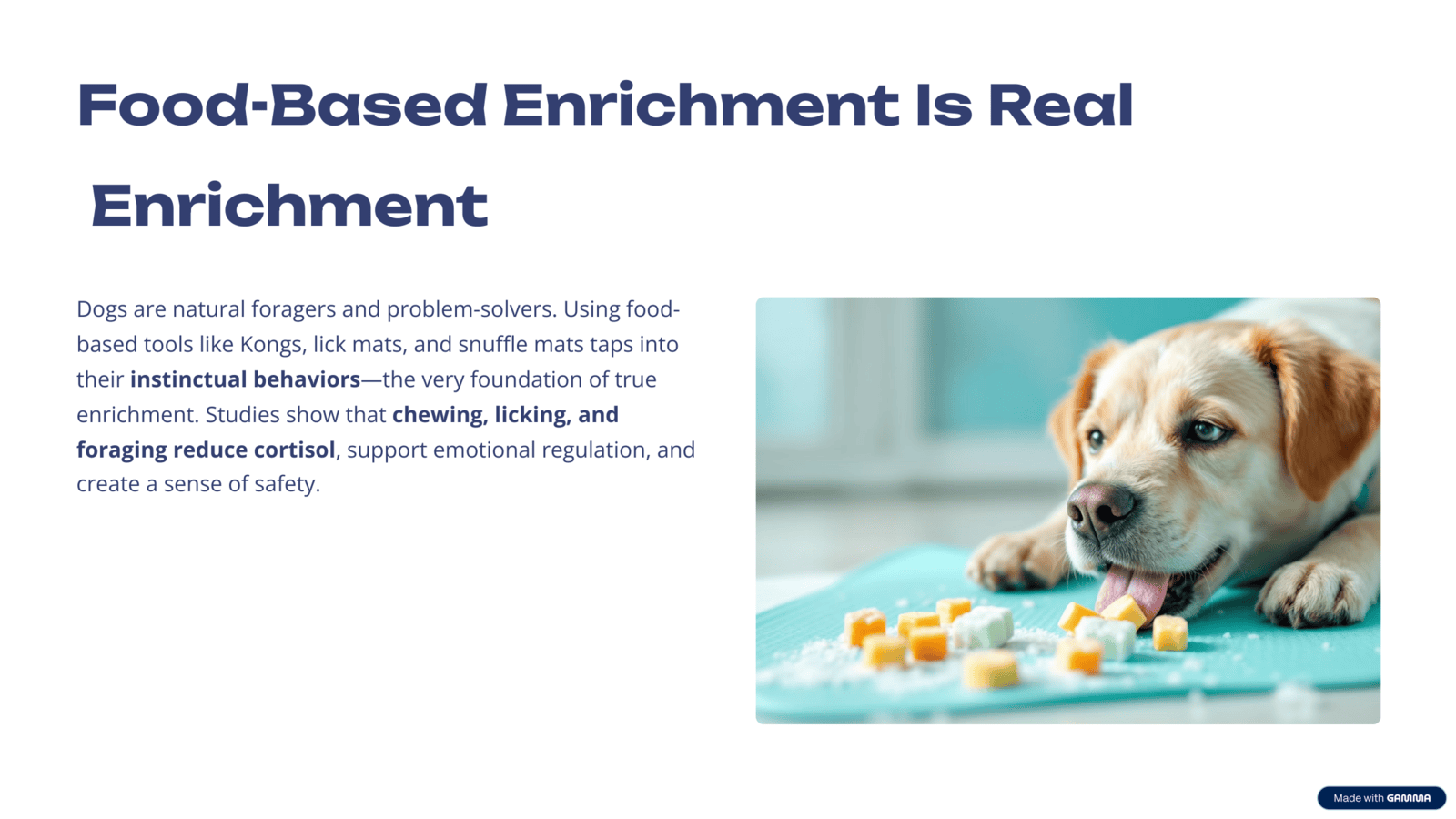
Myth: “If it involves food, it’s not enrichment. It’s just feeding.”
Reality: Enrichment is about engagement—not what’s on the menu.
Dogs are natural foragers and problem-solvers. Using food-based tools like Kongs, lick mats, and snuffle mats taps into their instinctual behaviors—the very foundation of true enrichment. Studies in applied animal behavior repeatedly show that chewing, licking, and foraging reduce cortisol, support emotional regulation, and create a sense of safety and satisfaction.
The act of working for food through sniffing, licking, or manipulating objects activates both the olfactory and prefrontal parts of the brain. This is a big deal—it’s not just "feeding," it’s mental exercise.
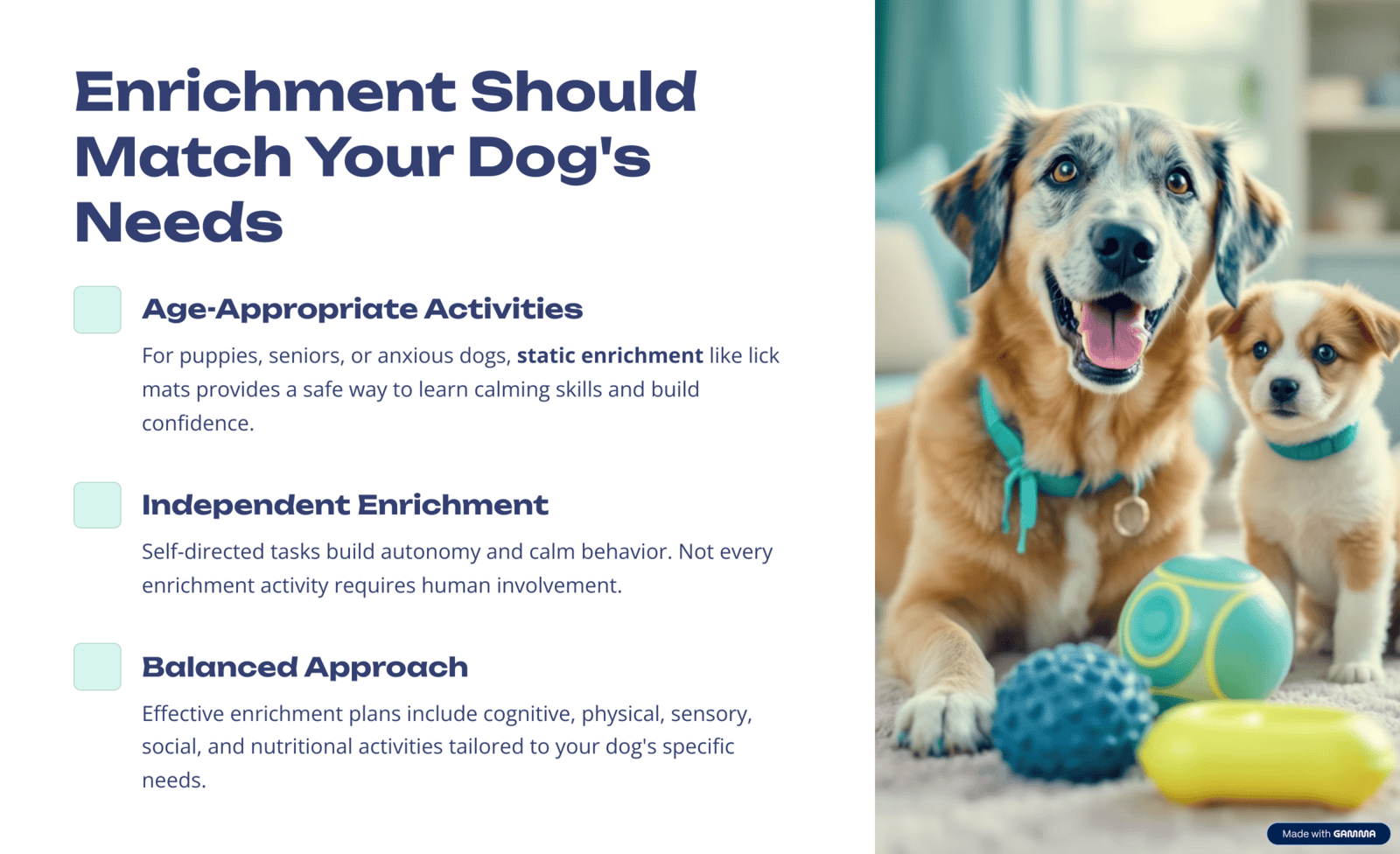
Enrichment Must Match the Dog's Age, Energy, and Ability
While puzzle hunts and scent games are absolutely fantastic, they aren’t the only valid forms of enrichment. For some dogs—particularly puppies, seniors, or anxious dogs—static enrichment (like lick mats or frozen Kongs) provides a safe, accessible way to learn calming skills and build confidence.
Labeling these tools as “not real enrichment” is dismissive of the many dogs (and owners) who are just beginning their training journey.
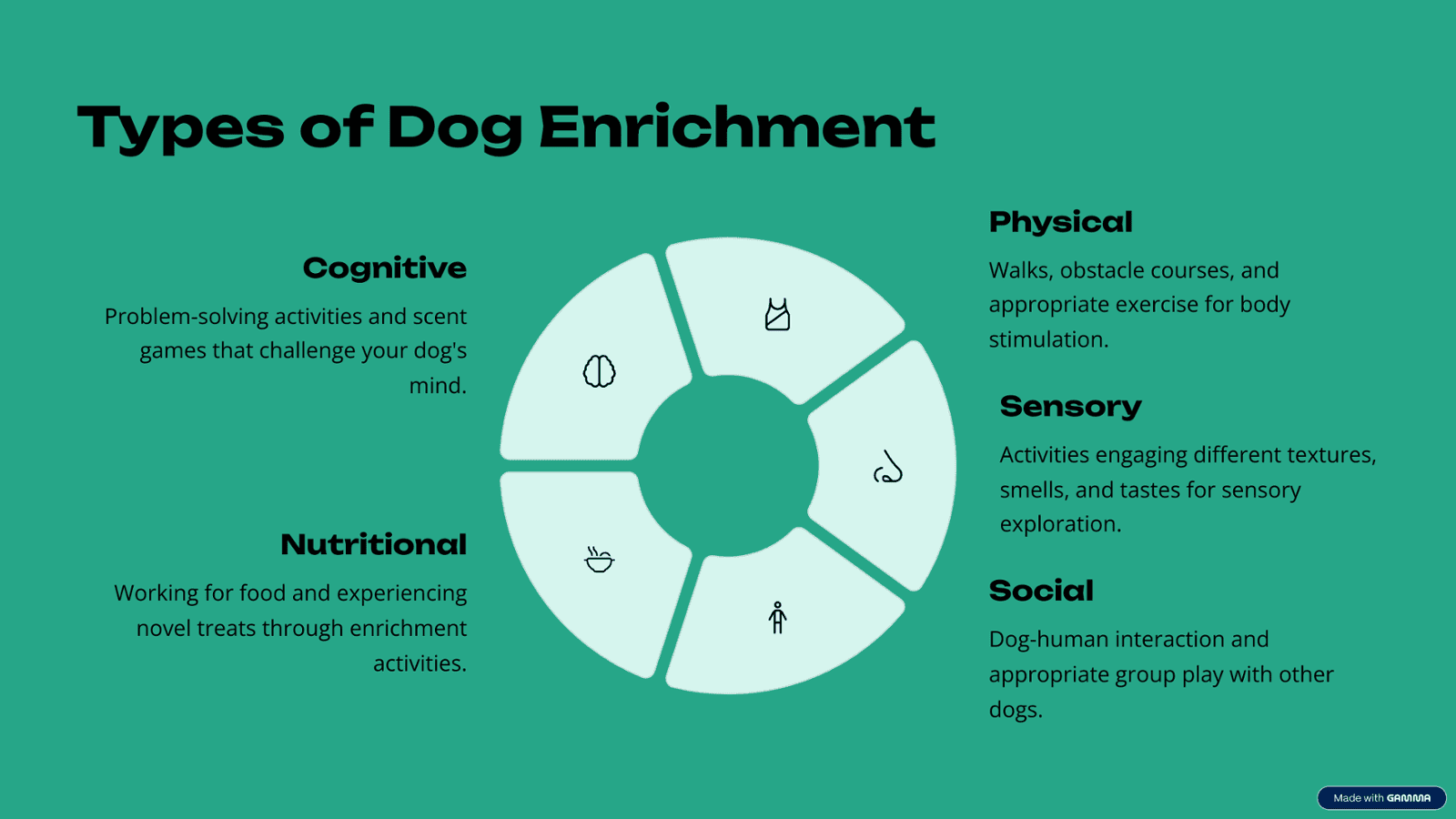
Myth: “If the human isn’t involved, it’s not enrichment.”
Reality: Independent enrichment builds autonomy and calm behavior.
Human-guided activities are wonderful—but not always practical or necessary. Dogs need a variety of enrichment types, including both interactive (with a person) and solitary (self-directed) tasks. The goal is to create a balanced enrichment plan that includes:
Cognitive Enrichment (problem-solving, scent games)
Physical Enrichment (walks, obstacle courses)
Sensory Enrichment (textures, smells, tastes)
Social Enrichment (dog-human interaction, group play)
Nutritional Enrichment (working for food, novel treats)
Yes, dogs benefit from handler engagement. But that doesn’t mean every enrichment moment must be micromanaged. A well-placed snuffle mat after a training session can reinforce calmness and teach a dog to self-soothe—a life skill every dog needs.
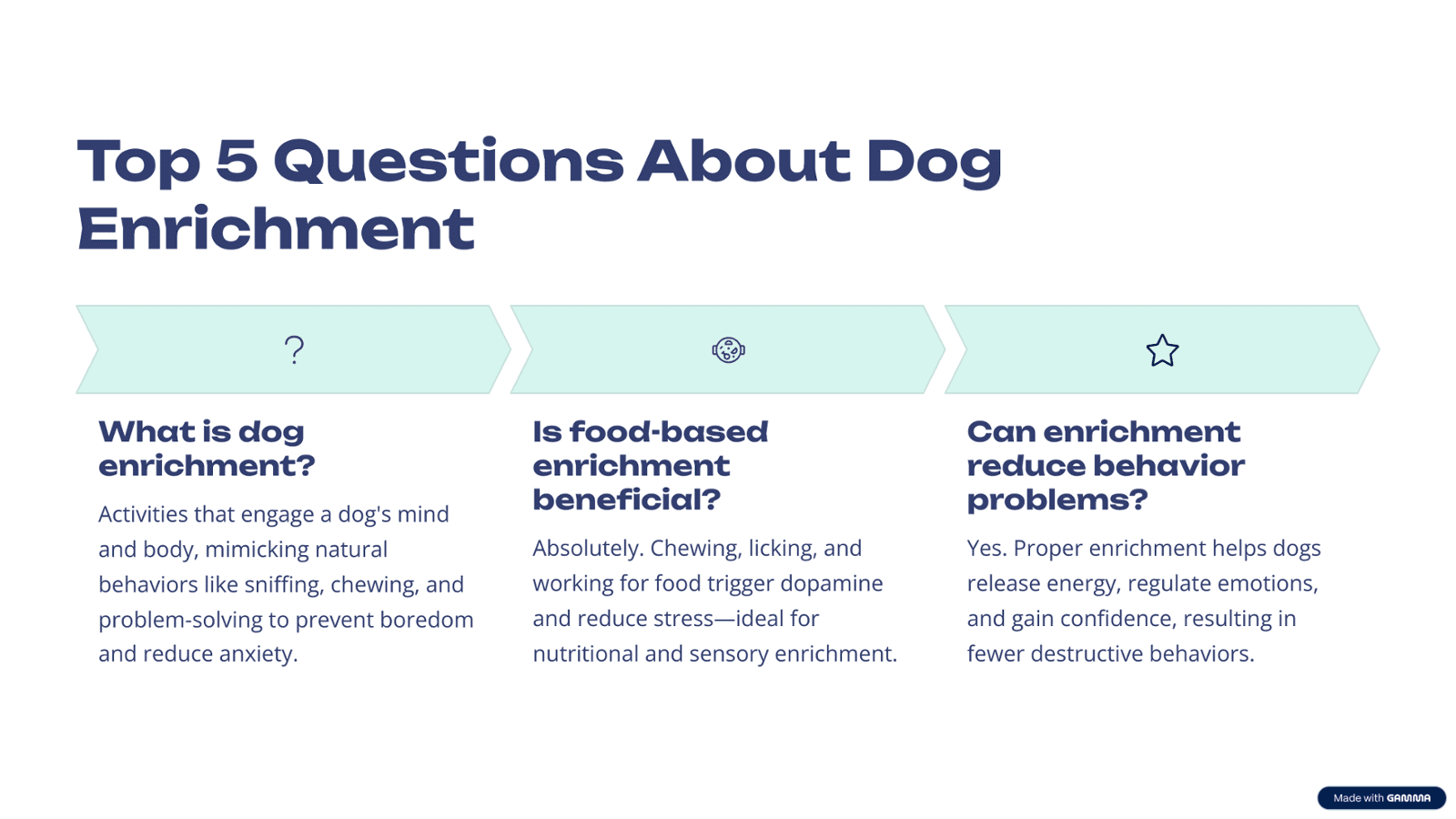
Answering the Top 5 Questions About Dog Enrichment
1. What is dog enrichment and why is it important?
Dog enrichment involves offering activities that engage a dog’s mind and body, mimicking natural behaviors like sniffing, chewing, exploring, and solving problems. It’s vital for preventing boredom, reducing anxiety, and improving behavior.
2. Is food-based enrichment beneficial?
Absolutely. Chewing, licking, and working for food trigger dopamine and reduce stress. It’s an ideal form of nutritional and sensory enrichment, especially for anxious or recovering dogs.
3. Can enrichment reduce behavior problems?
Yes. Proper enrichment helps dogs release energy, regulate emotions, and gain confidence. This results in fewer destructive behaviors, less reactivity, and improved focus during training.
4. How often should I enrich my dog?
Daily enrichment is best, with a balance of active and passive options. Aim for at least 15–30 minutes of structured enrichment daily. It can be layered into meals, walks, or crate time.
5. Does every dog need enrichment?
Yes—regardless of breed, age, or behavior. Each dog needs different types and levels, but all benefit from activities that challenge their brain and meet their emotional needs.
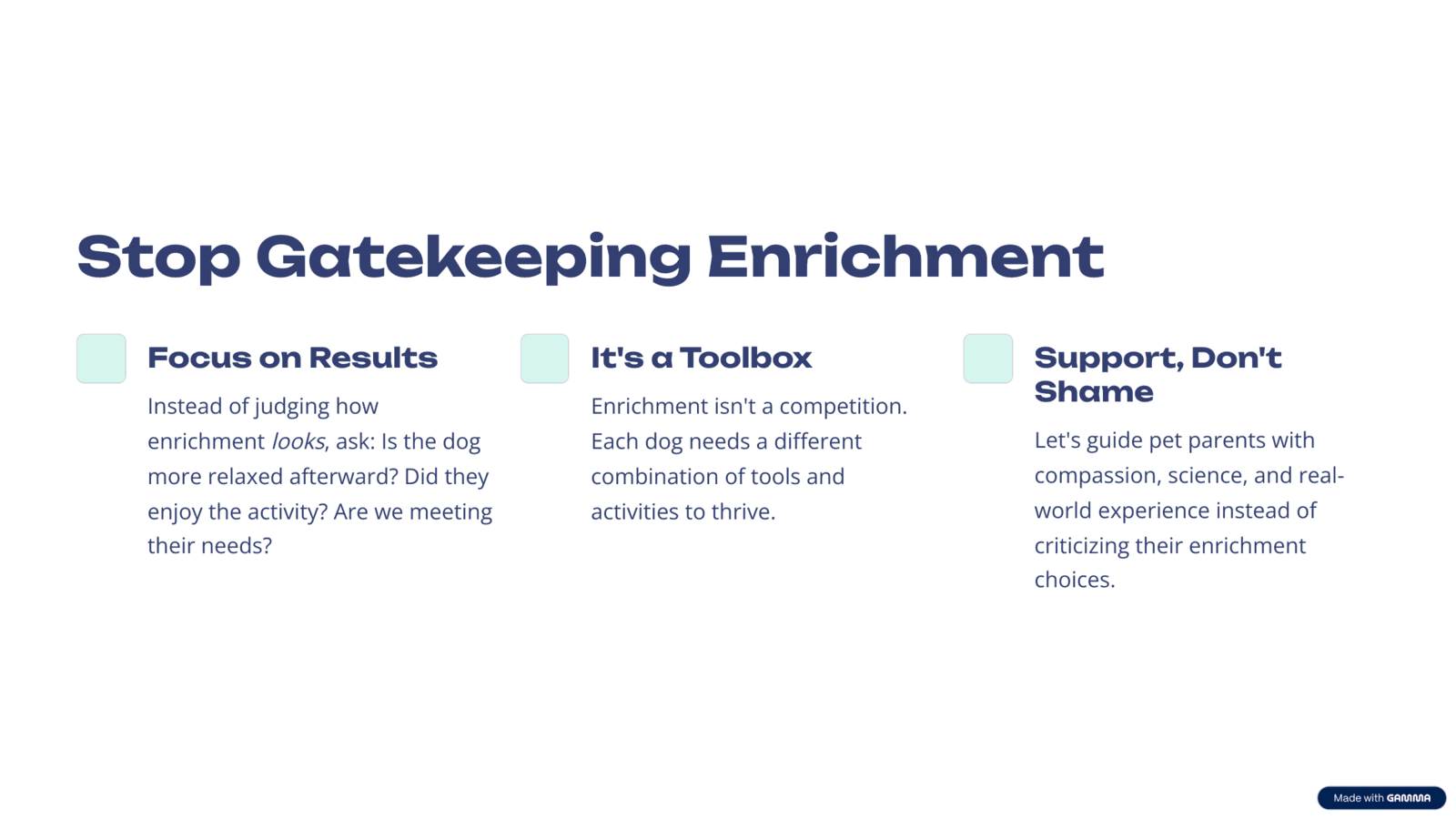
Legend Acres Canine Enrichment Essentials
Amazon Recommended Gear for Mental & Physical Stimulation
Support your dog’s mental health and behavior with the Legend Acres Canine Enrichment Gear List, featuring Amazon’s top-rated enrichment tools for dogs of all ages and energy levels.
From puzzle feeders and lick mats to interactive toys, snuffle mats, and scent work kits, this curated list helps reduce boredom, ease anxiety, and build focus through engaging, force-free activities. Perfect for indoor enrichment, crate training, and rainy day fun, these tools are ideal for both puppies and adult dogs.
Backed by certified trainers and used in our behavior modification and service dog programs, every item is selected to promote calm, confidence, and cognitive engagement.
Turn downtime into enrichment time—because a tired brain is a well-behaved brain!
Ready to Enrich with Purpose?
Explore our custom enrichment plans, behavior modification programs, and group training options designed to meet your dog’s unique needs.
📅 Schedule your free assessment today at www.Legend-Acres.com
📲 Or call us to learn how enrichment can transform your dog’s behavior, confidence, and daily life.
Because it’s not about what you use—it’s about why and how you use it.
Legend Acres
Force Free. Fear Free. Functionally Enriching.
Peer-Reviewed & Expert Resources
Yin, S. (2009). Low Stress Handling, Restraint and Behavior Modification of Dogs & Cats. CattleDog Publishing.
Horwitz, D., & Mills, D. (Eds.). (2009). BSAVA Manual of Canine and Feline Behavioural Medicine. British Small Animal Veterinary Association.
Overall, K. (2013). Manual of Clinical Behavioral Medicine for Dogs and Cats. Elsevier Health Sciences.
